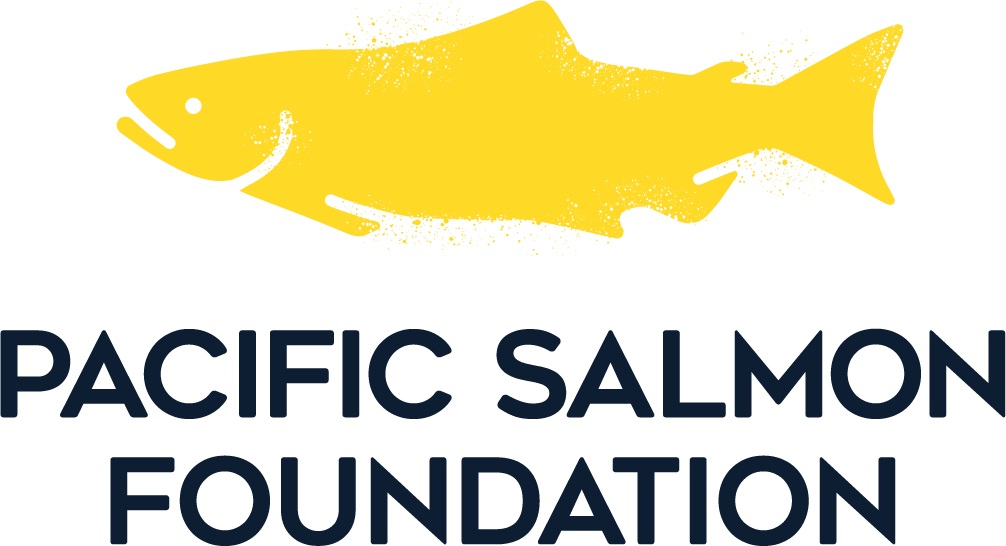Shelly Creek Fish Habitat Restoration - Phase II Complete
This time last year we had just completed the Shelly Creek Fish Habitat Restoration project in Martindale Pond where over 30 truck loads of sediment and reed canary grass (an invasive species) were removed, restoring approximately 1000 m2 of overwintering habitat for Coho Salmon fry and smolts, and juvenile trout.
This year, fish habitat restoration work was completed on a 400 m section of Shelly Creek that flows through the Shelly Farm (located at Stanford Avenue in Parksville) before flowing into Martindale Pond and under Martindale Road on its way to the Englishman River. The restored section, shown between the two red lines on the map below, is also used as rearing habitat for Coho fry and smolts. The fish habitat restoration work was designed and supervised by our Biologist, Dave Clough.
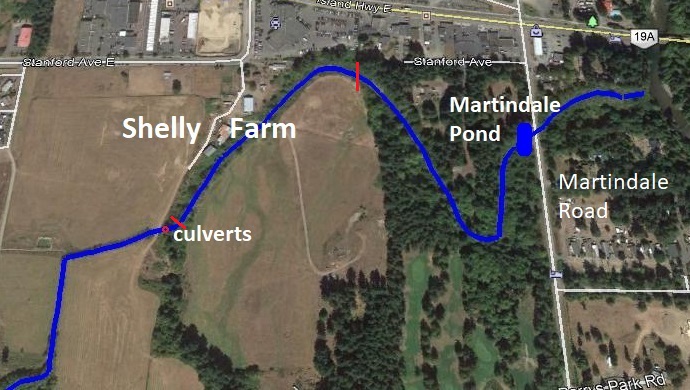
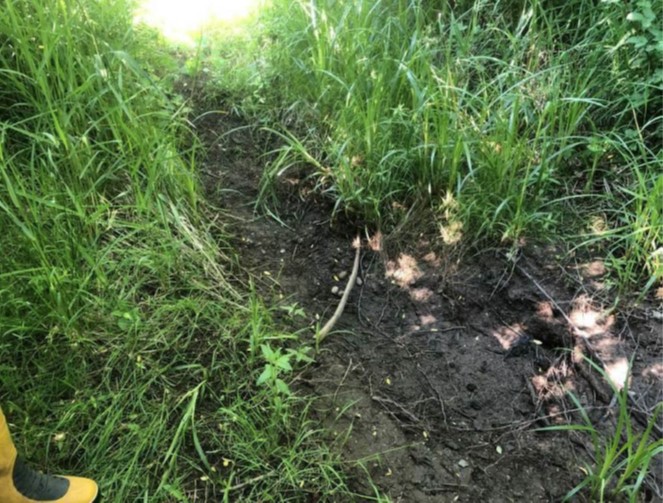
Decades of sediment from upstream sources had buried the creek, displacing habitat and enabling reed canary grass and that dreaded Himalayan blackberry to choke streamflow.

Shallow pools at risk of becoming oxygen deprived and too warm to sustain Coho fry were the only habitat in summer.
With a grant from the Pacific Salmon Foundation for $22,200, we hired Parksville Heavy Equipment (PHE) to excavate the sediment and invasive vegetation; re-establish the creek channel and deep pools; and add 80 cubic yards of gravel and rock to restore the aquatic habitat required for the bugs that the fry feed upon. The pools quickly filled with groundwater which means a water source for the creek had been cut off by the thick layer of sediment.The photos below illustrate the amazing job PHE did for us. What a transformation!!
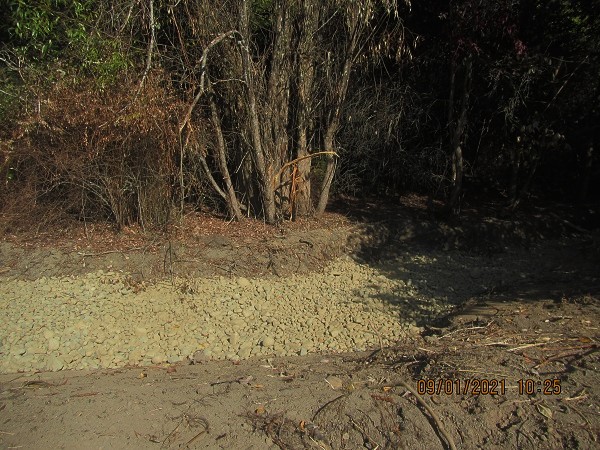


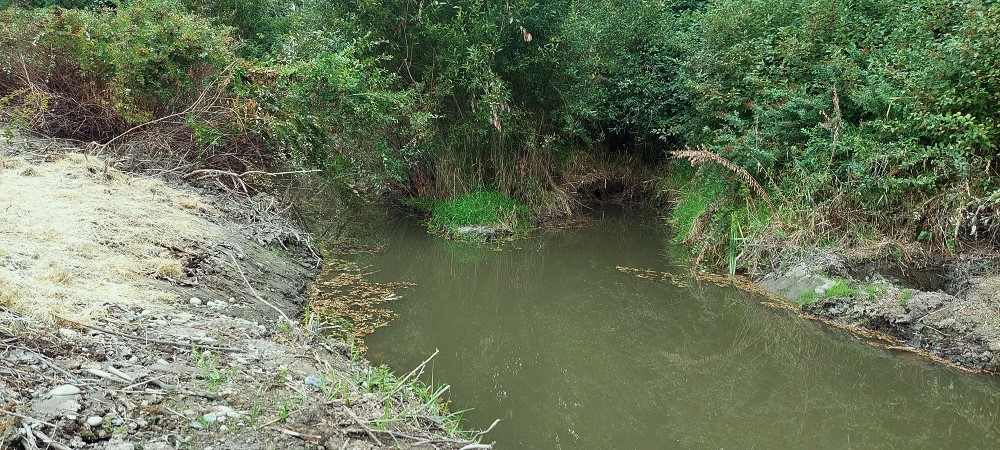
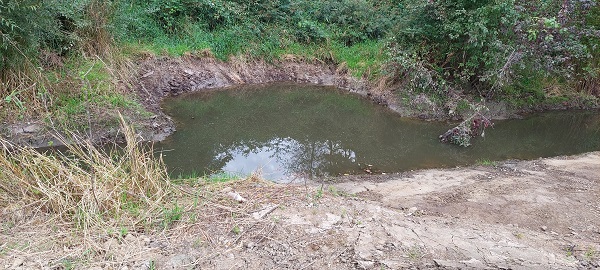
The excavated sediment was used to make a berm to help contain water in the stream channel during high flows and stop the flooding of the farmer's field every winter. The berm was contoured so rainfall will flow off evenly, preventing erosion. MVIHES volunteers seeded the berm with a fast-growing erosion control seed mix and covered it in straw to prevent the seed from being washed away by the rain. Shrubs were already beginning to regenerate on the berm and creek bank.
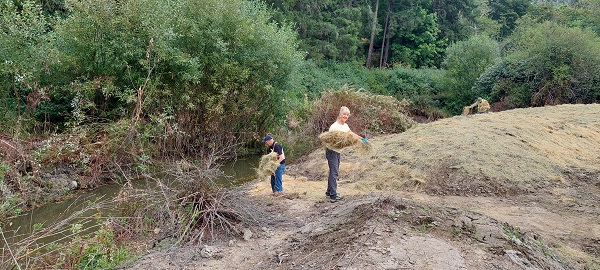
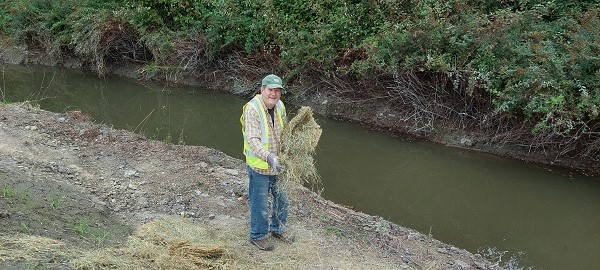
Spreading straw: Pat Ashton, foreground; Carl Rathburn; Ryan Christie, way in back. Don McConnell
The other seed and straw spreaders were Chris Smith, Dick Dobler, Brian Lea, Shelley Goertzen, and Barb Riordan.
Like Martindale Pond last year, this project was Carl Rathburn's baby. Carl did the communicating with the owners of Shelly Farm, and organizing PHE and Dave Clough to get the party started.
In addition to Carl and the super spreaders, many thanks go out to:
Dave Clough (DR Clough Consulting): project design and "Notification for Changes in a Stream"; erosion and sediment control; site restoration.
Ryan Christie, John Christie, and all the crew at Parksville Heavy Equipment: contractor for creek excavation and site restoration.
Murray and Shelly Laplante, landowners of Shelly Farm : granted permission for completing work on their farm. Provided straw bales.
Laura Terry, Community Advisor for Department of Fisheries and Oceans: supported project and submitted "Notification for Changes in a Stream".
Barb Riordan, MVIHES volunteer: applied for PSF grant; took some pictures; bossed a few people around.
